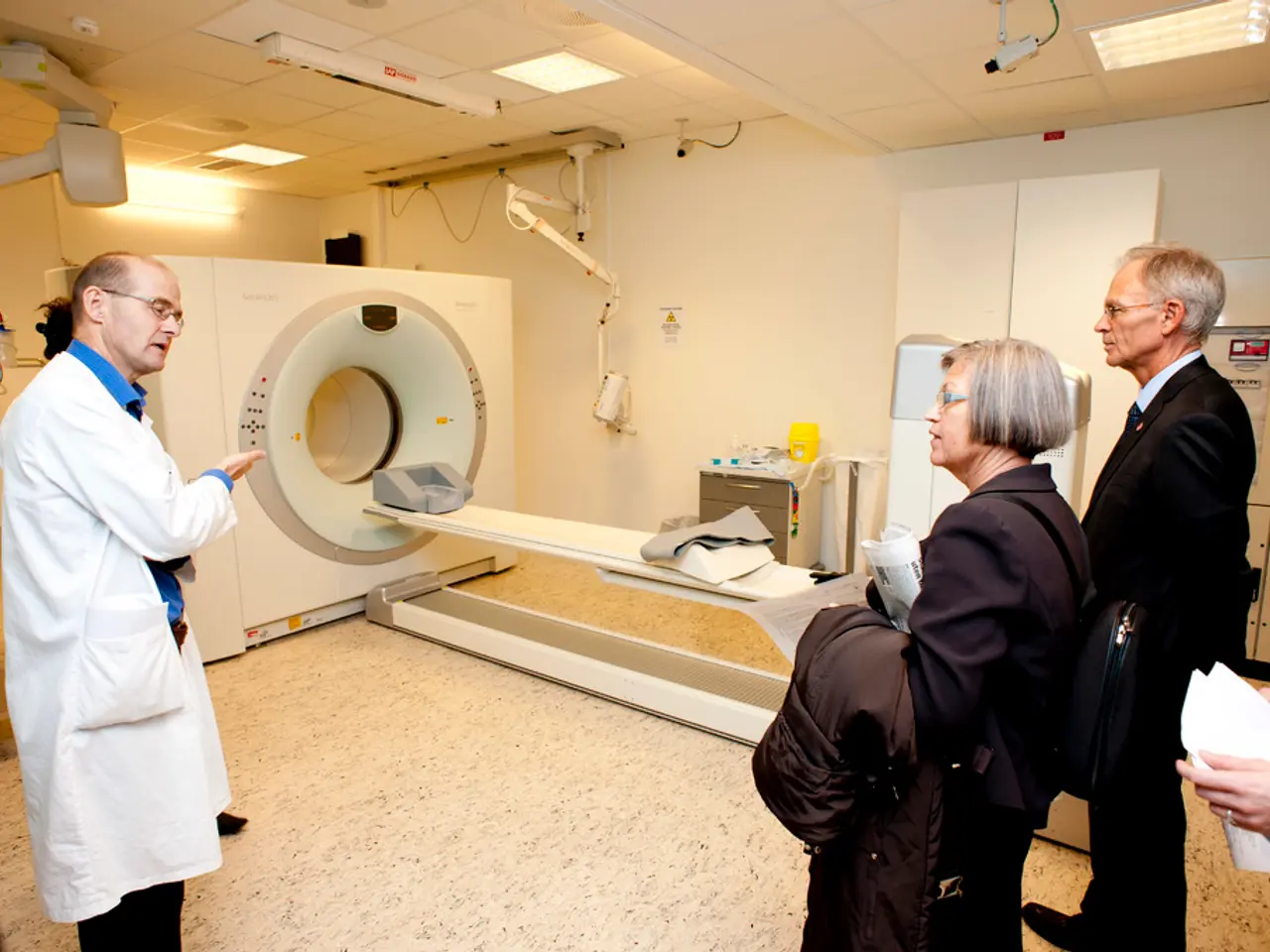Groundbreaking Advancements Unveiled in Comparative Outcomes Study by Human Data Sciences
In a groundbreaking development, Human Data Sciences (HDS) has announced an update to its real-world data analytics platform, Livingstone. This innovative update aims to revolutionise multi-endpoint comparative outcome studies, making them more efficient, precise, and patient-centric.
The latest advancements in multi-endpoint comparative outcomes studies, particularly significant for regulatory and Health Economics and Outcomes Research (HEOR) contexts, incorporate the integration of automation and real-world data (RWD) analytics platforms such as Livingstone. These advancements feature emerging capabilities in artificial intelligence (AI) and machine learning (ML).
Key developments include the maturation of synthetic control methods for n-of-1 and parallel-group clinical trials. These methods enable patient-level counterfactual outcome estimation without concurrent control groups, facilitating the reliable identification of treatment responders and handling multiple endpoints by leveraging historical real-world data. Iterative validation techniques further improve the robustness of endpoint estimation, reducing bias and helping regulatory acceptance of findings when traditional randomised controls are unavailable or impractical.
AI and machine learning enhancements in patient-reported outcomes (PRO) and trial design are another significant aspect. AI algorithms automate the transformation of paper-based instruments to electronic formats, scaling meaningful data capture directly from patients. This shapes endpoints that better reflect patient priorities, improving regulatory and payer confidence in trial relevance and outcomes. Machine learning-driven trial design optimization tools iteratively adjust inclusion criteria, sample sizes, and treatment dosing by simulating patient variability and response dynamics in real time.
Real-world data analytics platforms like Livingstone specialise in automating comprehensive real-world evidence generation. They integrate diverse data sources (electronic health records, claims, registries) with advanced analytics to support comparative effectiveness and outcome research across multiple endpoints. Platforms excel in automated cohort creation, endpoint extraction, and statistical modelling, reducing manual effort, accelerating data-to-insight cycles, and supporting both HEOR decision-making and regulatory submissions.
By combining AI-based natural language processing and predictive analytics, such platforms can uncover subtle patient subpopulation effects and treatment heterogeneity otherwise missed in traditional trials or manual analyses.
The advances collectively allow for more efficient, precise, and patient-centered multi-endpoint comparative outcome studies that meet evolving regulatory standards and the needs of payers by leveraging real-world data and automation frameworks like Livingstone. This reflects a broader move towards integrated trials enhanced with AI and robust RWD analytic platforms to generate high-quality evidence at scale.
Early adopters of Livingstone include major pharmaceutical manufacturers, who are using the platform to support early market access planning, global HTA submissions, and comparative safety evaluations in various regions like the EU, LATAM, and APAC. The platform automates the entire process, applying standardised risk adjustment, longitudinal tracking, and validated real-world endpoints across all outcomes of interest.
The comparative patient journey functionality in Livingstone allows users to construct and compare patient journeys across multiple clinical outcomes in real time. This update enables simultaneous comparative outcomes studies across multiple endpoints for the first time in the industry.
Rhiannon Thomason, CEO of Human Data Sciences, states that this update enables researchers to evaluate multiple outcomes such as relative survival, hospitalization, or treatment benefits simultaneously and systematically. This new functionality is particularly valuable for HEOR professionals and regulators, offering a radically improved evidence base that is fast, reproducible, and scientifically validated.
The comparative outcomes module builds on HDS's 2024 innovation, which enabled same-day fixed-price RWE studies—a capability that remains unique in the sector. HDS brings together a team of data and research scientists to provide analysis of complex patient data for the life science industry.
This update marks a significant leap forward in the field of comparative outcome studies, offering a rapid, automated, and scientifically rigorous solution for generating comparative evidence at scale.
- The integration of automation and real-world data (RWD) analytics platforms like Livingstone, such as those used in multi-endpoint comparative outcomes studies, is greatly beneficial in the field of digital health, as they leverage emerging capabilities in artificial intelligence (AI) and machine learning (ML), offering a more efficient, precise, and patient-centric approach to research.
- In the realm of health-and-wellness, the latest advancements in multi-endpoint comparative outcome studies, like those enabled by Livingstone, are particularly significant for scientific research and Health Economics and Outcomes Research (HEOR) contexts, as they make it possible to conduct simultaneous comparative outcomes studies across multiple endpoints for the first time in the industry, providing a radically improved evidence base that is fast, reproducible, and scientifically validated.








